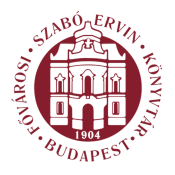Matits Ferenc: Protestant Churches - Our Budapest (Budapest, 2003)
On one side of the high altar stands the angular pulpit, also made of marble, while on the other there is a baptismal font of similar shape and appearance but smaller proportions. Above and below the gallery there are thick rows of rectangular windows with yellow glass. The interior is amply lighted by these and by the windows beneath the dome. The organ, which was made by the Pécs- based organ maker Mihály Stach to designs by organist Imre Sulyok, was placed in the organ loft above the entrance porch. Beneath the interior in the basement lies the congregation hall complete with a stage. Since October 1933, a bell in the tower has tolled to call the congregation together. According to contemporary reports, a moving speech was made by the Rabbi of Kőbánya, whose former, monumental synagogue built in Oriental style stands nearby, on the occasion of the church's consecration on 4 October 1931. The upper end of the tower, together with the clock, perished in World War II. In the reconstruction of 1990, a lower tower without a clockwork mechanism was built. The Lutheran Church of Óbuda No. i Dévai Bíró Mátyás tér, District 111 First formed in 1843, the Lutheran congregation of Óbuda began a fund raising campaign to build a church in the years following the turn of the century. By 1912 as much as 50 thousand korona had accumulated in the construction fund, but the entire sum was lost after it was invested in war-loan bonds. Disbanded in 1917, the church construction committee resumed its activities in 1922. The parish was given permission to start another major fund-raiser in 1926. A competition for tenders to build a church on a site in Dévai Bíró Mátyás tér donated by the municipality was announced in 1933. The parish recommended that designs by architect Loránd Friedrich (1891-1947) be realised. Its foundation stone was laid in October 1934 and the historicist building, which blended a Romanesque-Gothic style with principles of modern architecture, was consecrated by Bishop Sándor Raffay in June 1935. Turned to the east, the main front of the church features a large stone cross and the inscription A mighty fortress is our God on the wall above the protruding, arched quarry- stone gate. In a manner characteristic of north European Gothic architecture, the steep roof is closed by a stepped gable wall on the main front and above the sacristy. The quarry-stone covered, square-shaped tower, which tapers off from about the middle and is topped with an elongated sugar-loaf cap, stands 22
